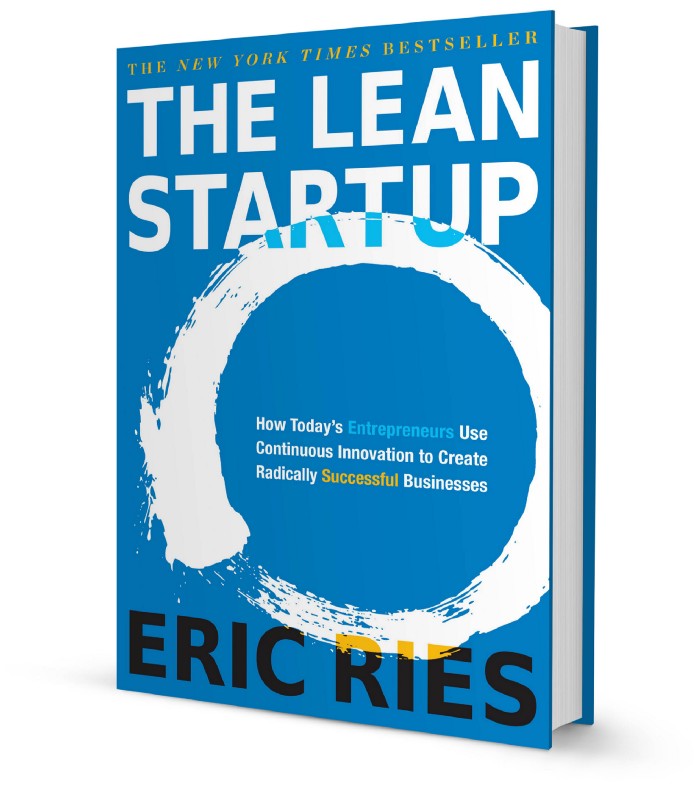
What makes lean startups lean? In his groundbreaking book, Eric Ries begins by showing that startups are different from traditional companies.
The Lean Startup and the traditional approach to innovation
While incumbents can look at their past to guess what the future may hold in terms of market dynamics, customer behavior, distribution channels and product development, and resource allocation, startups are out in the Unknown.
In addition, while established corporations may rely on a proven business model, startups must search for a viable business model. The difference between execution and discovery is core to Eric Ries’s thinking.
Now, how should startups go about finding a sustainable business model? In his book, Eric Ries discusses “validated learning”. In other words, as soon as anyone has an idea, he or she should look at testing it to assess its validity.
The Lean Startup is based on validated learnings
This thinking must be applied to two core hypotheses:
- The value hypothesis is based on weather customers will see value in the startups proposed service
- The growth hypothesis looks at whether numerous consumers may seek an interest in the product and go ahead and buy it.
In other words, while the value hypothesis looks at early adopters, the growth hypothesis means to validate the size of the market.
To test both of these hypotheses, Eric Rees suggest that entrepreneurs make a minimal viable product rather than a full-blown one. He mentions the example of dropbox.com the file syncing service. Dropbox founders made up a video showing their offering before riding secured enough customer feedback and, then, they invested in more significant cloud capacity.
The same line of thinking applies to designing the product. Entrepreneurs should go through a cycle consisting in building, measuring and learning in order to improve a product rather than a following a multi-year plan scheme that may end up in making something no one wants.
Once the product is developed, split testing comes in handy to spot the most promising developments in the next version of the product. Split testing consists in comparing two different versions of a product and seeing how the market response of them. Founders should go for the product that gets the most traction on the market.
Sometimes, entrepreneurs may find out that they are not getting the kind of market traction that day are seeking in this case, they may review their value and growth hypothesis and pivot their business.
As the company grows, founders should focus on one engine of growth among three—the sticky engine, the viral engine and the paid engine—to maximize efficiency.
Finally, while many refer to vanity metrics such as media attention, Eric Ries recommends that entrepreneurs look at “core metrics”; that is those that best describes consumer behavior, Revenue, churn or anything else that may express customer interest.
The Lean Startup mitigates the innovation risk
A foundational book introducing the scientific method to innovation, The Lean Startup focuses on mitigating the no market need risk. The book doesn’t address other risks including lacking cash, team building issues, talent attraction and retention. Plus, many ideas apply to software-based companies and perhaps less to hardware companies that may require a significant capital investment.
The sum up, in this foundational book, Eric Ries begins by showing that established companies are different from startups. As a consequence, applying large corporation frameworks and processes to new ventures may prove detrimental. Unlike incumbents geared towards excelling at execution, startups aim at discovering a sustainable business model. Eric Ries shows how applying the scientific method to innovation is useful in testing whether consumers will buy a product, and whether there is a large market. Eric Ries suggests that founders look to validated learning to assess their value and Growth hypothesis. He also suggests that entrepreneurs get engaged in “build measure learn product development cycles”, split testing, pivoting, and finding relevant metrics.
Written in a fresh style, Eric Ries shows founders how to mitigate innovation risks, especially those pertaining to the “the no market” risks. But the book does not address other risks pertaining to startups including talent retention, lack of cash, team building, competition… Plus, the book seems geared towards software-based companies and less to hardware organizations that must confront capital intensive investment decisions.

[…] of a startup, we’re going to go away you with this one from Ryan Rutan, Startups.co’s Chief Innovation Officer. You’ve gotten to truly articulate them, prioritize the few which might be truly […]
[…] of a startup, we’re going to go away you with this one from Ryan Rutan, Startups.co’s Chief Innovation Officer. You’ve to actually articulate them, prioritize the few which can be truly pivotal, […]
[…] of a startup, we’re going to leave you with this one from Ryan Rutan, Startups.co’s Chief Innovation Officer. You might have to really articulate them, prioritize the few which can be really pivotal, […]